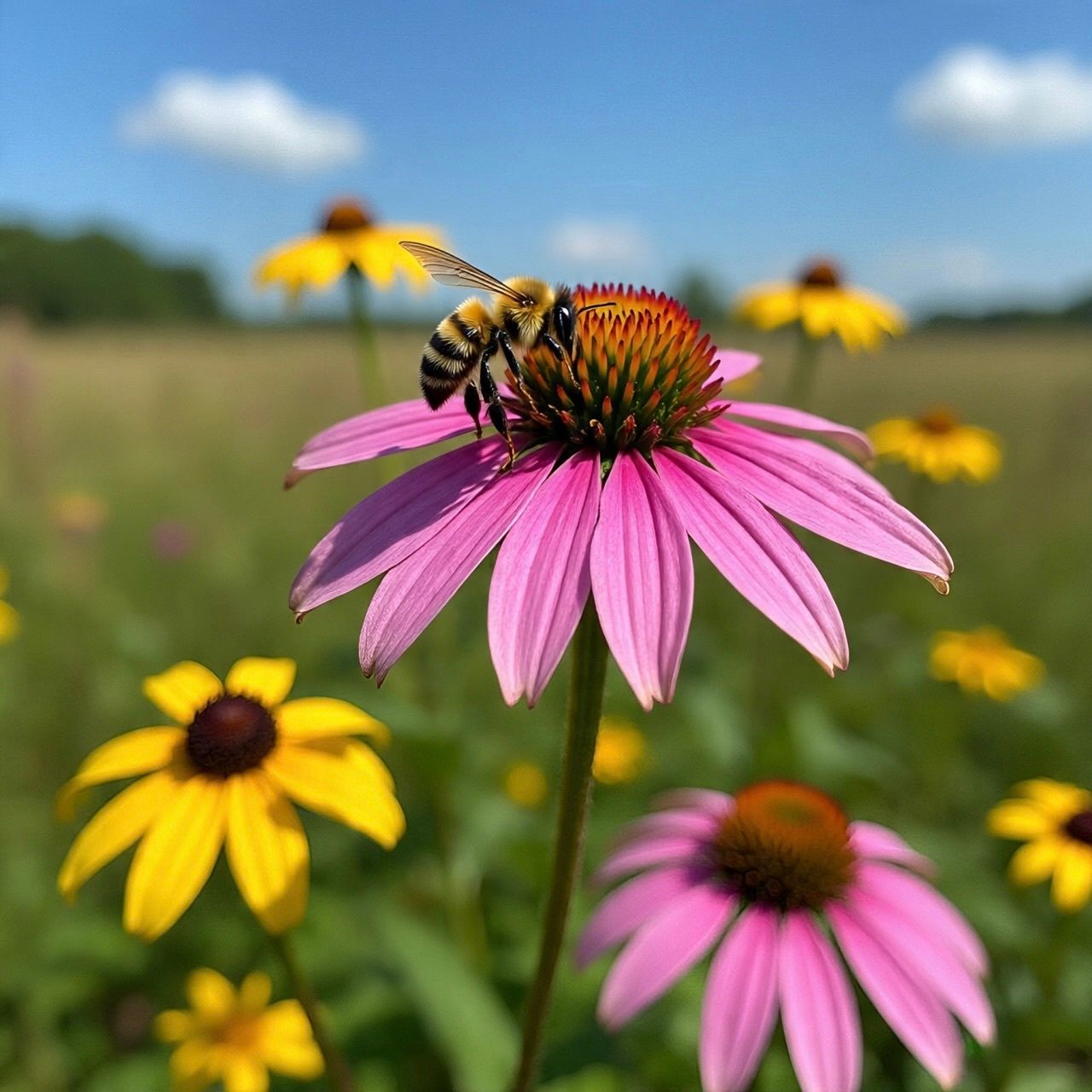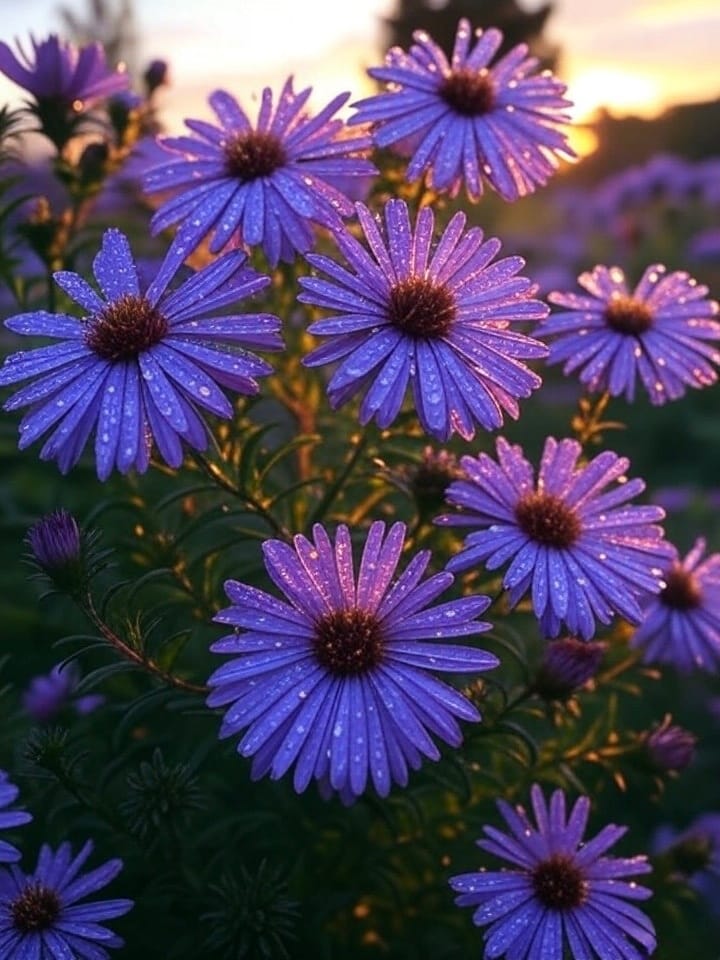Native plants in Bethlehem PA offer a sustainable way to enhance your garden while supporting local ecosystems. In this comprehensive guide, we'll explore why incorporating native plants in Bethlehem PA is essential for regenerative landscape design, highlight top species thriving in the area's climate, and provide practical tips for planting and maintenance. This article equips you with everything needed to create a vibrant, eco-friendly garden. Whether you're in the South Side of Bethlehem, Fountain Hill, or nearby Allentown neighborhoods, native plants in Bethlehem PA can transform your outdoor space into a haven for wildlife and a model of native ecosystem integration.
Why Choose Native Plants for Your Bethlehem PA Garden?
Opting for native plants in Bethlehem PA isn't just a trend—it's a smart choice rooted in environmental and practical benefits. Native plants are species that have evolved in the Lehigh Valley region for thousands of years, making them perfectly adapted to local soil, climate, and weather patterns. Native plants require less water, fertilizer, and pesticides compared to exotic species, reducing maintenance costs and environmental impact. This aligns with the content pillar of regenerative landscape design, where native ecosystem integration helps restore biodiversity and combat habitat loss.
One key advantage is their role in supporting local wildlife. Native insects are specialists that rely on specific native plants for food, which in turn supports birds and other animals. In Pennsylvania, there are approximately 2,100 native plant species, but urban development in areas like Bethlehem's historic districts has reduced natural habitats. By planting native plants in Bethlehem PA, gardeners can help preserve this biodiversity. Gardens with native species see up to 50% more pollinator activity than those with non-natives.
Local authority figures emphasize these benefits. A Master Gardener in Lehigh and Northampton counties notes, “I thought I knew the native plant scene, but I was truly amazed at how much there is in the Lehigh Valley. The Lehigh Valley not only has a booming economy and lots of nature, but it is also a hub to restore or preserve biodiversity with native plants.” Native plants improve soil health and reduce erosion, especially in Bethlehem's varied microclimates—from the warmer urban areas near the Lehigh River to cooler rural spots in Northampton County.
Additionally, native plants in Bethlehem PA are resilient to local frost dates, typically May 1-10 for the last spring frost, allowing for earlier establishment without the risk of damage from late freezes. This resilience translates to long-term savings, as these plants thrive with minimal intervention, promoting a regenerative approach that benefits both your wallet and the planet.
Top 10 Native Plants Thriving in Bethlehem's Climate

Top 10 Native Plants Thriving in Bethlehem, PA
Bethlehem's climate, characterized by USDA Hardiness Zone 6b-7a with average last frost dates around May 1-10, is ideal for a variety of native plants. These species not only beautify gardens but also integrate seamlessly into native ecosystem designs. Below, we spotlight two featured plants and eight additional must-haves, all recommended for their adaptability in Lehigh Valley neighborhoods like Easton and South Bethlehem. For more options, consult the Lehigh Valley Native Plant Directory.
Eastern Red Columbine (Aquilegia canadensis) - The Spring Jewel
Eastern Red Columbine (Aquilegia canadensis) is a standout among native plants in Bethlehem PA, known for its nodding red and yellow flowers that bloom in early spring. This perennial reaches 1-3 feet tall and thrives in partial shade with well-drained soil, making it perfect for woodland edges in Fountain Hill or shaded spots in Bethlehem's South Side. It attracts hummingbirds and bumblebees, enhancing pollinator habitats. Plant after the May 1-10 frost dates for best results. Care tips: Water moderately; it's drought-tolerant once established but benefits from mulch to retain moisture in Bethlehem's variable microclimates.
Butterfly Weed (Asclepias tuberosa) - Summer's Orange Beacon
Butterfly Weed (Asclepias tuberosa), with its vibrant orange clusters blooming in mid-summer, is essential for native plants in Bethlehem PA gardens. Growing 1-2 feet tall, it prefers full sun and sandy, well-drained soil, ideal for sunny borders in Allentown or Easton's urban gardens. As a host for monarch butterflies, it supports regenerative landscapes by boosting insect populations. Recommend planting post-May 1-10 frost to avoid damage. Care tips: Minimal watering needed; avoid over-fertilizing to prevent leggy growth.
8 Additional Must-Have Natives
Here are eight more native plants in Bethlehem PA that complement Eastern Red Columbine and Butterfly Weed, selected for their ease and ecological value:
Black-eyed Susan (Rudbeckia hirta): Bright yellow daisy-like flowers in summer; 1-3 feet tall; full sun; attracts pollinators; drought-tolerant after establishment.
Purple Coneflower (Echinacea purpurea): Pink-purple blooms from June to August; 2-4 feet; sun to part shade; supports birds and butterflies; low maintenance.
Joe-Pye Weed (Eupatorium fistulosum): Tall pink clusters in late summer; 4-7 feet; moist soil; ideal for rain gardens in Northampton County; wildlife magnet.
Bee Balm (Monarda didyma): Red tubular flowers in summer; 2-4 feet; sun/part shade; hummingbird favorite; aromatic leaves deter pests.
Swamp Milkweed (Asclepias incarnata): Pink blooms in mid-summer; 3-5 feet; moist areas; monarch host; thrives near Bethlehem's Lehigh River.
Wild Bergamot (Monarda fistulosa): Lavender flowers July-August; 2-4 feet; dry soil; bee attractor; medicinal uses.
New England Aster (Symphyotrichum novae-angliae): Purple daisy flowers in fall; 3-6 feet; full sun; late-season pollinator support.
Cardinal Flower (Lobelia cardinalis): Scarlet spikes in summer; 2-4 feet; moist shade; hummingbird plant; perfect for Bethlehem's cooler microclimates.
These native plants in Bethlehem PA, when combined, create layered, year-round interest while adhering to regenerative principles.
Planting Calendar for Lehigh Valley Native Gardens
Timing is crucial for success with native plants in Bethlehem PA, especially considering local frost dates of May 1-10 for the last spring frost. Start seeds indoors 6-8 weeks before this period for species like Eastern Red Columbine.
Early Spring (March-April): Prepare soil; plant cool-season natives like Wild Geranium before frost risks subside.
Late Spring (After May 1-10): Transplant perennials such as Butterfly Weed; ideal for Bethlehem's urban warmth.
Summer (June-August): Add late-bloomers like Joe-Pye Weed; mulch to conserve water in drier Northampton areas.
Fall (September-October): Plant asters and grasses; roots establish before first frost (around October 18).
Winter: Mulch established plants; plan for spring using the Lehigh Valley Native Plant Directory.
Account for microclimates: Warmer spots in Southern PA or Lehigh Valley may allow earlier planting, while rural areas need caution until after May 10.
Creating Wildlife Habitat with Native Plants
Native plants in Bethlehem PA are key to building wildlife habitats, aligning with regenerative landscape design. By integrating species like Asclepias tuberosa, you create food sources for monarchs and birds. Native gardens increase bird populations by providing caterpillars—90% of birds feed their young on insects from natives.
Layer plants: Tall Joe-Pye Weed for structure, mid-height coneflowers for nectar, and groundcovers like Pennsylvania Sedge for shelter. In Lehigh Valley neighborhoods, this approach reduces invasive species. Host community workshops through Lehigh/Northampton Master Gardener programs to share practices—many document results showing 30-50% biodiversity boosts. Quote from a Master Gardener: “Every native planting site helps increase biodiversity in the Lehigh Valley.”
Where to Source Native Plants in the Lehigh Valley
Sourcing authentic native plants in Bethlehem PA ensures genetic diversity. The Lehigh Valley Native Plant Directory lists local nurseries like Edge of the Woods Native Plant Nursery in Orefield, specializing in Mid-Atlantic natives. Other options include Lehigh Valley Home & Garden in Allentown and annual sales by Master Gardeners in Lehigh/Northampton counties.
Plant sales offer species like Aquilegia canadensis. Avoid wild collection to preserve habitats. For community engagement, join workshops documented by local groups, fostering sustainable gardening in Bethlehem PA.
By embracing native plants in Bethlehem PA, you're not only beautifying your garden but also contributing to a healthier Lehigh Valley ecosystem. Start small—perhaps with Eastern Red Columbine or Butterfly Weed—and watch your space thrive.
We’d love to hear from you:
What's a native plant that has thrived in your own garden that you love? Reply to this email or leave a comment and share!



